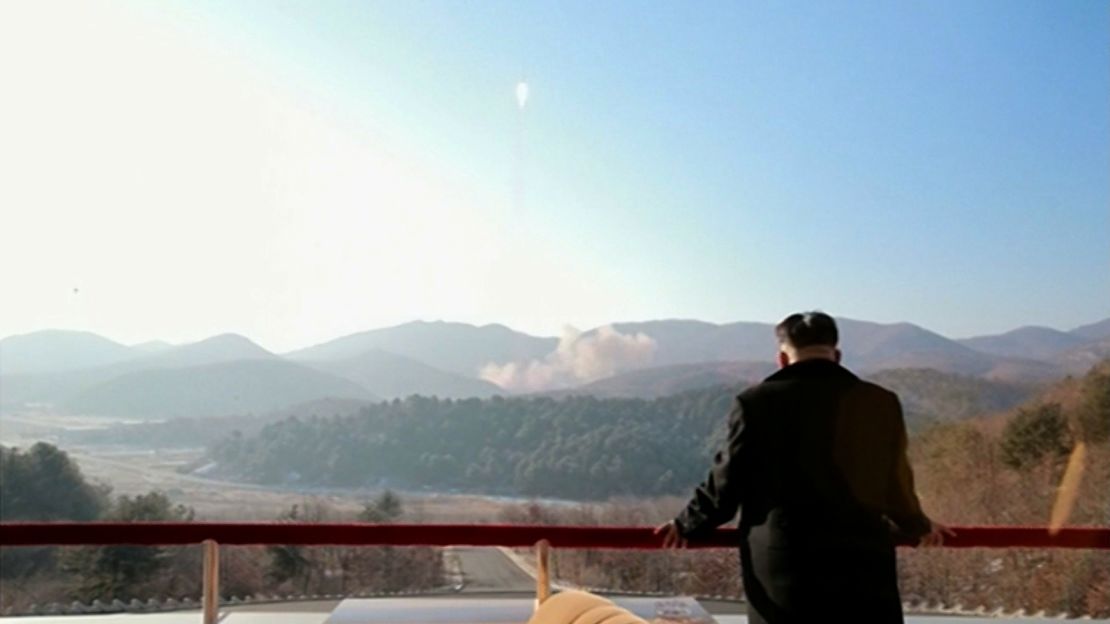Story highlights
North Korea claims to have successfully put a satellite into orbit
Rocket launched one month after hydrogen bomb test
While North Korea claims that its space program is entirely peaceful, many analysts and foreign government officials worry that it is designed to mask testing of inter-continental ballistic missiles (ICBM).
Other countries – including the U.S. and the former Soviet Union – have previously used the same kind of rockets to transport satellites to space.
Developing successful ICBM technology capable of transporting a nuclear payload accurately over vast distances is no easy feat. It demands sophisticated technology only achieved through intensive testing.
Testing rockets through satellite launches would provide invaluable data for potential future ICBMs, according to a 2015 report on Pyongyang’s space program by 38 North, an analysis website run by the U.S.-Korea Institute at Johns Hopkins University.
“Even failed satellite launches would be a learning experience,” wrote aerospace engineer John Schilling. Schilling said that a key sign to look out for in future North Korean satellite launches would be attempts to test an advanced re-entry vehicle, vital for an effective ICBM.

How close is North Korea to miniaturizing a warhead?
A key step towards a successful ICBM program would be miniaturizing nuclear weapons, making them light enough to fit on top of a rocket.
Pyongyang claimed in May last year that it had successfully done so, in an announcement that was met with skepticism from U.S. officials.
“Our assessment of North Korea’s nuclear capabilities has not changed,” National Security Council spokesman Patrick Ventrell said in a statement at the time. “We do not think that they have that capacity.”
“However, they are working on developing a number of long-range missiles, including intercontinental ballistic missiles, that could eventually threaten our allies and the homeland,” he added.
While the White House was adamant that North Korea did not yet have the capability, other experts weren’t so sure.
U.S. Army Gen. Curtis Scaparrotti, the commander of U.S. forces in Korea, said as far back as October 2014 that he thought North Korea was capable of miniaturizing a nuclear device.
Miniaturization one of several key steps
Miniaturizing a nuclear weapon is one key part of building a nuclear-armed intercontinental ballistic missile.
The nuclear device also needs to be tough enough to be able to withstand the flight on a ballistic missile, experts say, and be housed in a “reentry vehicle” that can endure the intense heat generated by coming back into Earth’s atmosphere.
Writing in 38 North in 2015, arms control expert Jeffrey Lewis said he thought North Korea was probably able to carry out each of those three steps.
Big questions remain about the reliability and accuracy of any weapon the North Koreans might be able to put together, wrote Lewis, who is the director of the East Asia Nonproliferation Program at the James Martin Center for Nonproliferation Studies.
However, Lewis emphasized to CNN earlier this year that there is no reason to expect North Korean technological progress to stand still.
“The thing we always forget is that every single country that builds a nuclear weapon immediately thinks of ways to make it more sophisticated,” he said.
The Taepodong rocket, currently under development in North Korea and closely related to the Unha device used to launch Pyongyang’s satellites, is believed to have a range of up to 9,000 kilometers, putting most of Western Europe, Asia and the western U.S. under threat.
Regional risks
While an ICBM is vital if North Korea wants to threaten the U.S. mainland, American military bases in Asia are likely well within range of existing technology, to say nothing of Tokyo or Seoul, the capital cities of two key regional allies.
Analysts agree that Pyongyang already possesses a nuclear arsenal of around a dozen nuclear weapons, and according to Chinese nuclear experts, that number may be as high as 20.
North Korea has also carried out submarine-launched ballistic missile (SLBM) testing, which would make it far more difficult to detect launch the vehicle. And it would also reduce the range its missiles would need to travel.
If confirmed, such a capability would threaten Hawaii and other U.S. Pacific territories.
CNN’s Jethro Mullen contributed to this report.

















